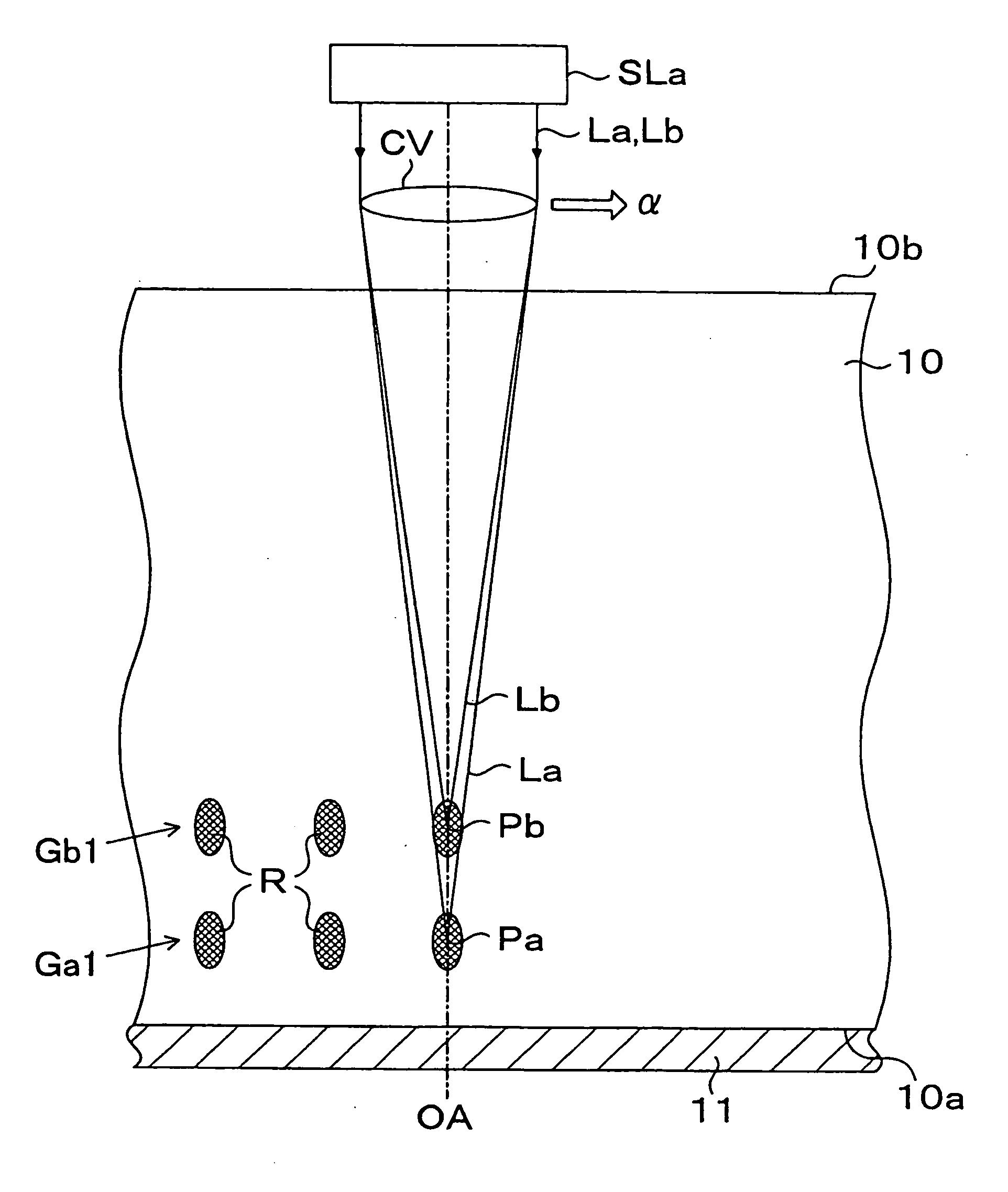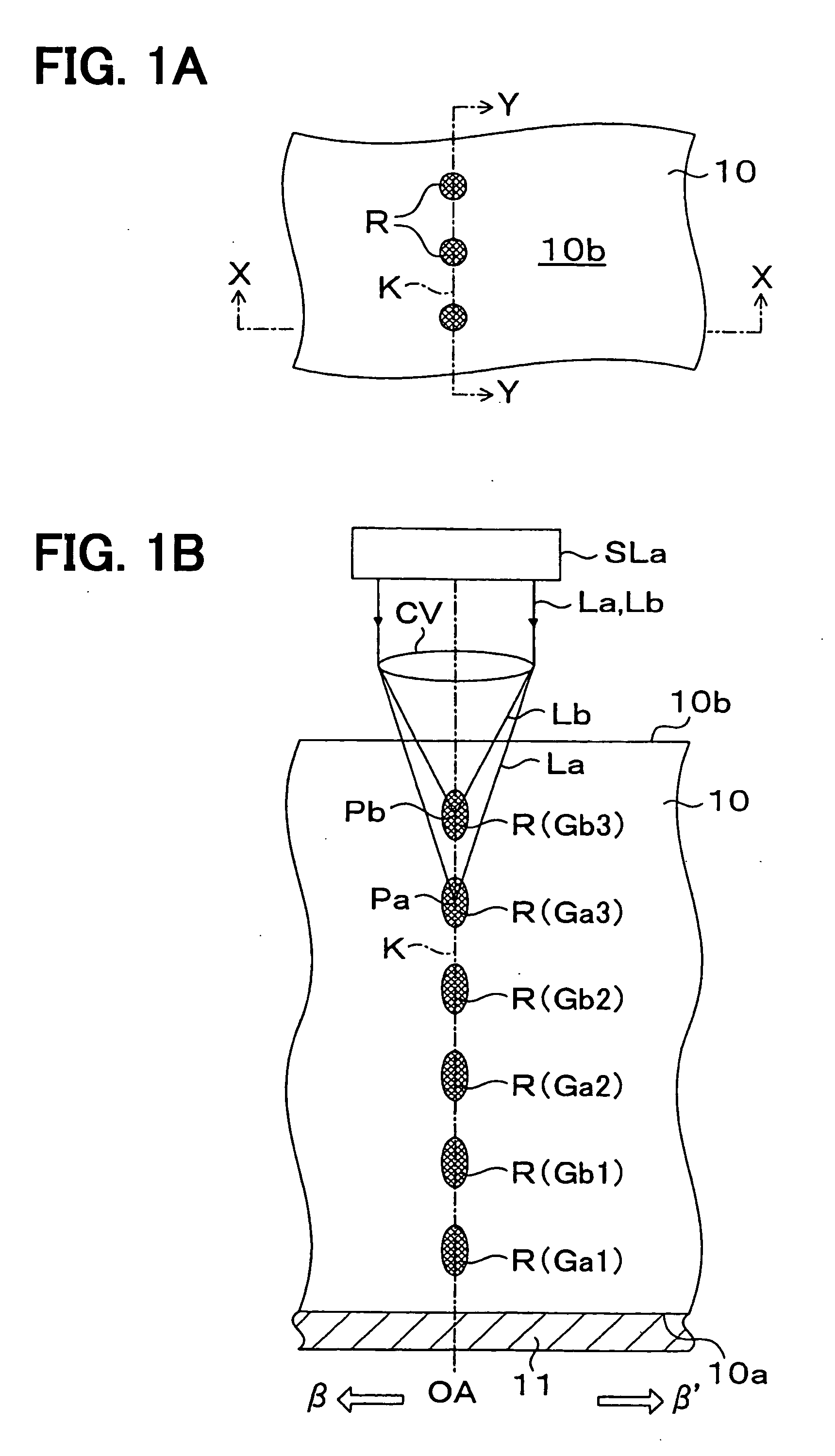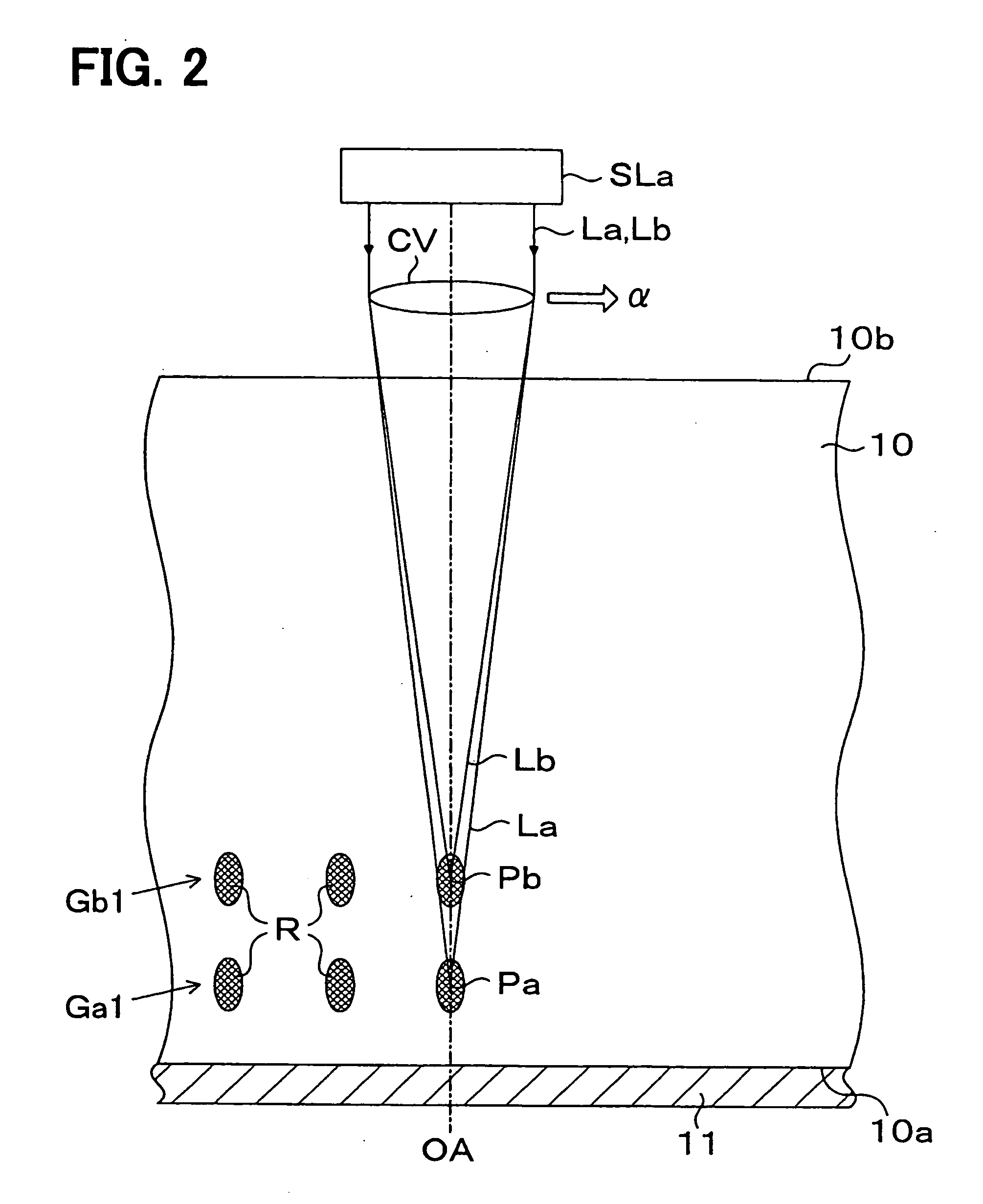Laser processing apparatus and laser processing method
a laser processing and processing apparatus technology, applied in metal working apparatus, manufacturing tools, welding/soldering/cutting articles, etc., can solve the problems of reducing processing efficiency and low throughput, and unsuitable for mass production, so as to achieve reliably the effect of forming a normal modifying region in a short period of tim
- Summary
- Abstract
- Description
- Claims
- Application Information
AI Technical Summary
Benefits of technology
Problems solved by technology
Method used
Image
Examples
first embodiment
1. First Embodiment
[0063]FIGS. 1A, 1B, and 2 through 4 illustrate processes to radiate a laser beam to a wafer 10 and form a modifying region according to a first embodiment. FIG. 1A shows a plan view of the wafer 10. FIGS. 1B and 2 through 4 schematically show longitudinal sectional views of the wafer 10. FIG. 1B is a sectional view taken in the line X-X of FIG. 1A. FIGS. 2 through 4 are sectional views taken in the line Y-Y of FIG. 1A equivalent to estimated cut line K.
[0064] A wafer (bulk silicon wafer) 10 is made of a bulk monocrystalline silicon material. A reverse side 10a of the wafer 10 is attached with a dicing film (dicing sheet, dicing tape, and expand tape) 11. The dicing film 11 is made of an expansible plastic film material that expands by heating or applying a force in an expanding direction. The dicing film 11 is bonded to all over the reverse side of the wafer 10 with an adhesive (not shown).
[0065]1: See FIG. 2>
[0066] The laser processing apparatus is provided wit...
second embodiment
2. Second Embodiment
[0098]FIGS. 5 and 6 illustrate processes to radiate a laser beam to the wafer 10 and form a modifying region according to a second embodiment. FIGS. 5 and 6 schematically show longitudinal sectional views of the wafer according to the second embodiment.
[0099]1: See FIG. 5>
[0100] The laser processing apparatus is provided with one laser light source SLb and one condenser lens CV The laser light source SLb selects one of a laser beam Lc with wavelength λc and a laser beam Lc with wavelength λd. The laser light source SLb then generates to radiate the laser beam with the selected wavelength.
[0101] The laser processing apparatus allows laser light source SLb to radiate laser beam Lc with wavelength λc. Optical axis OA for laser beam Lc is kept perpendicular to the surface 10b of the wafer 10. In this state, laser beam Lc is radiated to the surface 10b (incidence plane for the laser beam Lc) of the wafer 10 via condenser lens CV. Laser beam Lc is converged on focusi...
third embodiment
3. Third Embodiment
[0122]FIGS. 7 and 8 illustrate processes to radiate a laser beam to the wafers 12 and 13 and form a modifying region according to a third embodiment. FIGS. 7 and 8 schematically show longitudinal sectional views of the wafers 12 and 13 according to the third embodiment.
[0123] The wafers (bulk silicon wafer) 12 and 13 are made of a bulk monocrystalline silicon material. The dicing film 11 is bonded to a reverse side 12a of the wafer 12. The wafer 13 is layered on a surface 12b of the wafer 10. The surface 12b of the wafer 12 and the reverse side 13a of the wafer 13 are bonded to form a two-layer structure.
[0124]1: See FIG. 7>
[0125] The laser processing apparatus is provided with one laser light source SLc and one condenser lens CV The laser light source SLc selects one of laser beam Le with wavelength λe and laser beam Lf with wavelength λf. The laser light source SLc then generates to radiate the laser beam with the selected wavelength.
[0126] The laser processi...
PUM
| Property | Measurement | Unit |
|---|---|---|
| Time | aaaaa | aaaaa |
| Depth | aaaaa | aaaaa |
| Wavelength | aaaaa | aaaaa |
Abstract
Description
Claims
Application Information
 Login to View More
Login to View More - R&D
- Intellectual Property
- Life Sciences
- Materials
- Tech Scout
- Unparalleled Data Quality
- Higher Quality Content
- 60% Fewer Hallucinations
Browse by: Latest US Patents, China's latest patents, Technical Efficacy Thesaurus, Application Domain, Technology Topic, Popular Technical Reports.
© 2025 PatSnap. All rights reserved.Legal|Privacy policy|Modern Slavery Act Transparency Statement|Sitemap|About US| Contact US: help@patsnap.com



